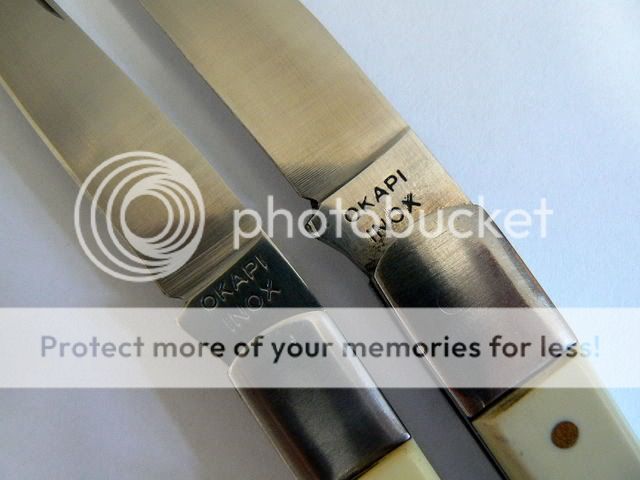- Joined
- Mar 19, 2012
- Messages
- 369
I once again hope that these fit in with the forum rules.
Okapi knives are an institution in South Africa, they are probably the most common knives found in the country.
These knives, although cheap, roughly made and finished, are used for everything from preparing food and skinning animals to commiting homicide and murder.
These knives are true workhorses, and despite their flimsy appearance, the knives are unbelievably tough and strong.
Okapi (now made exclusively in South Africa), make many different patterns of their knives, these shown ore only 2 of the many patterns that are available.
Okapi also make machetes and other agricultural knives.
I have seen stainless steel bladed examples, but the majority are made of carbon steel that is of quite good quality.
These knives do not receive any tender loving care by their owners, but are used hard.
Here are some pictures of an Okapi made in Germany, (the original home of the brand).
The example shown was aquired in 1978, (confiscated from a drunk that was causing trouble). LOL.
This knife is a non-locking slip joint which is by far the most commonly encountered pattern.
I have lightly cleaned the knife up.
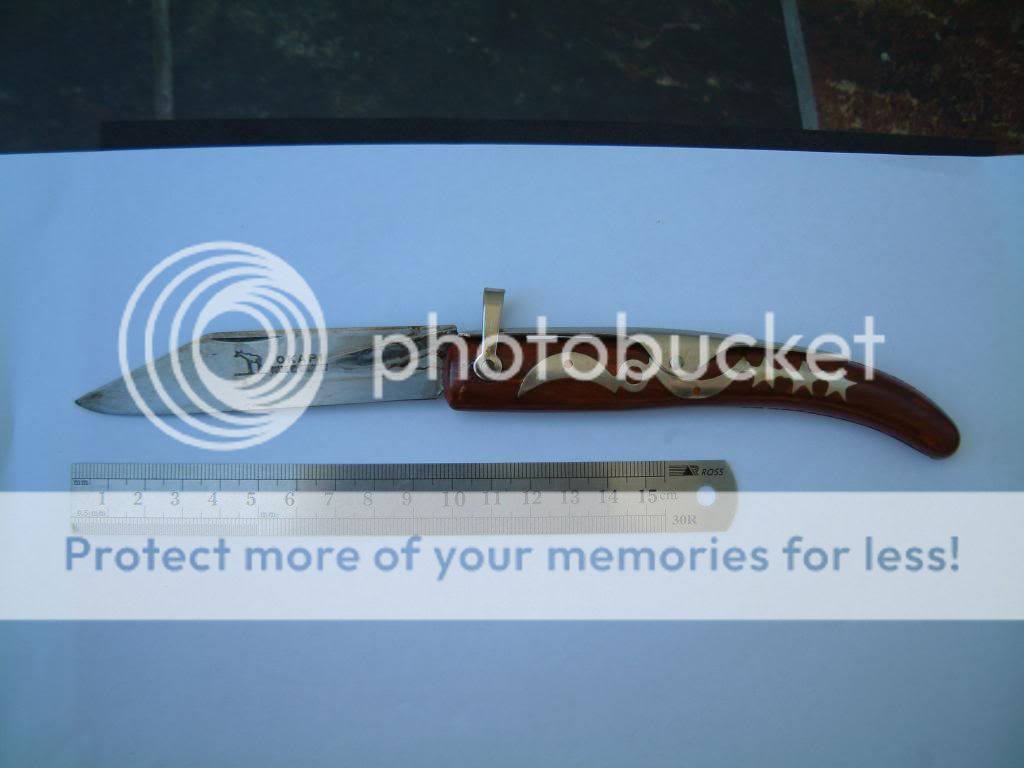
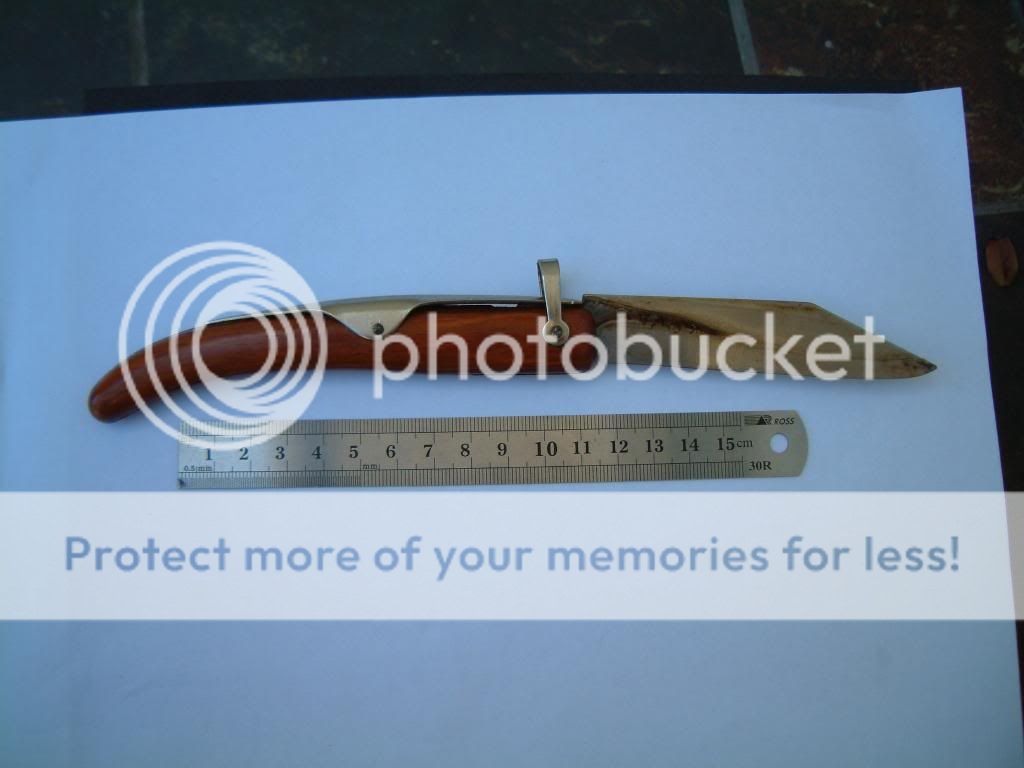
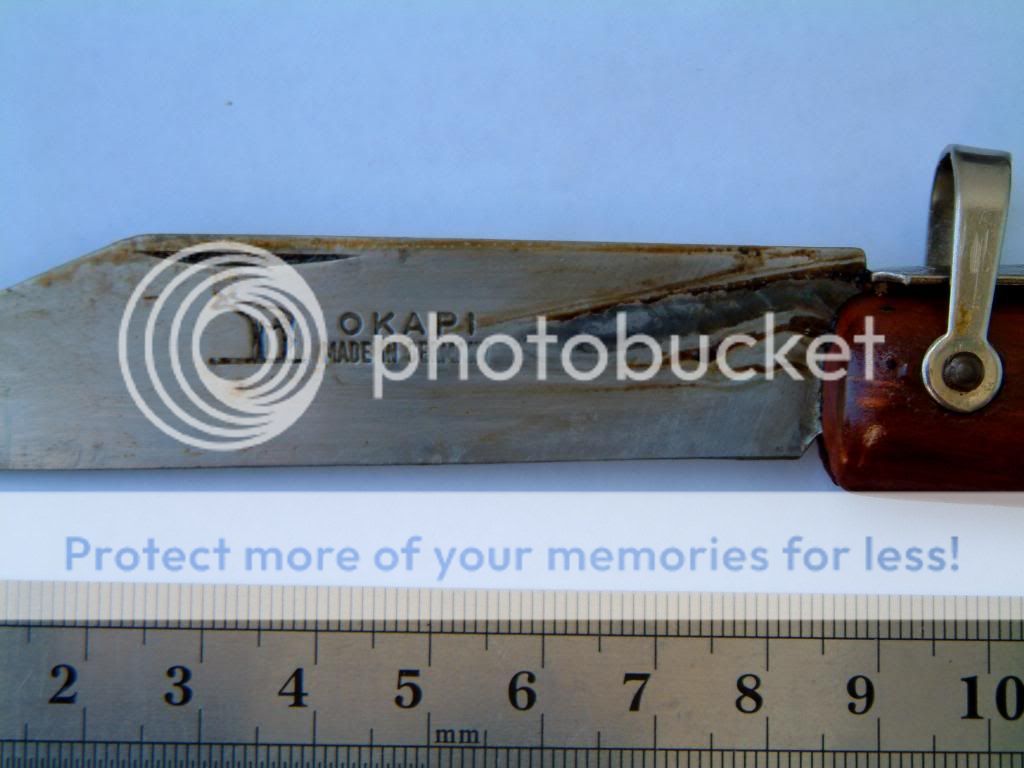
Here is an example of a locking version made in South Africa, the knife is still in its original unopened bubble pack.
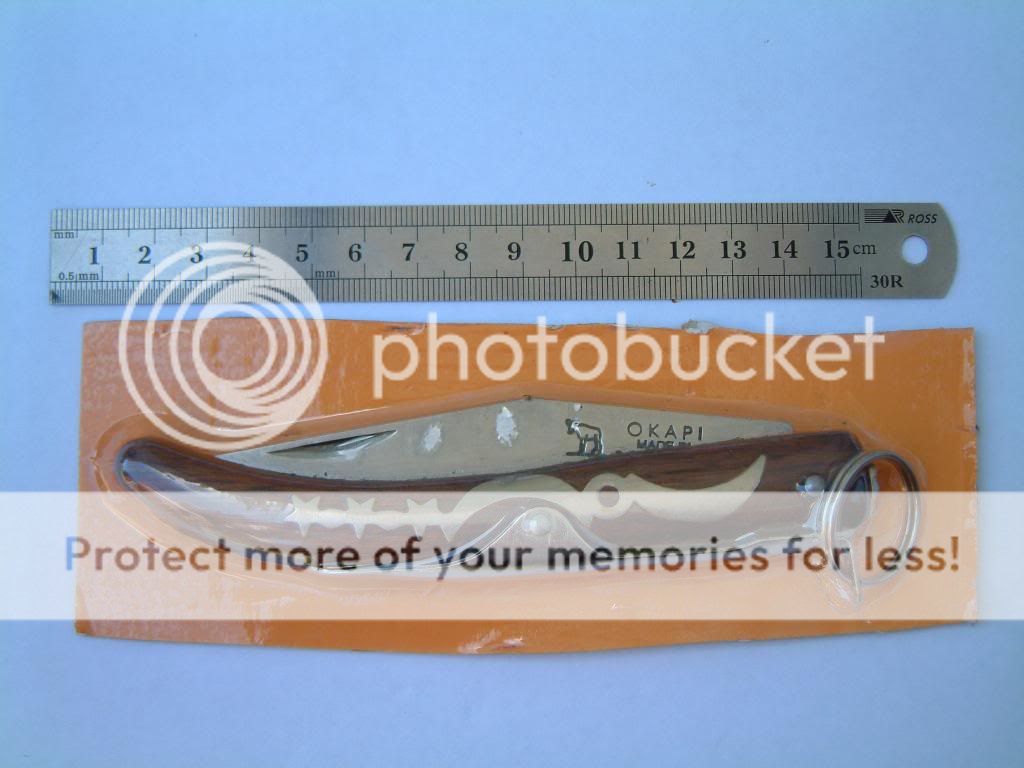
Okapi knives are an institution in South Africa, they are probably the most common knives found in the country.
These knives, although cheap, roughly made and finished, are used for everything from preparing food and skinning animals to commiting homicide and murder.
These knives are true workhorses, and despite their flimsy appearance, the knives are unbelievably tough and strong.
Okapi (now made exclusively in South Africa), make many different patterns of their knives, these shown ore only 2 of the many patterns that are available.
Okapi also make machetes and other agricultural knives.
I have seen stainless steel bladed examples, but the majority are made of carbon steel that is of quite good quality.
These knives do not receive any tender loving care by their owners, but are used hard.
Here are some pictures of an Okapi made in Germany, (the original home of the brand).
The example shown was aquired in 1978, (confiscated from a drunk that was causing trouble). LOL.
This knife is a non-locking slip joint which is by far the most commonly encountered pattern.
I have lightly cleaned the knife up.



Here is an example of a locking version made in South Africa, the knife is still in its original unopened bubble pack.

Last edited:



